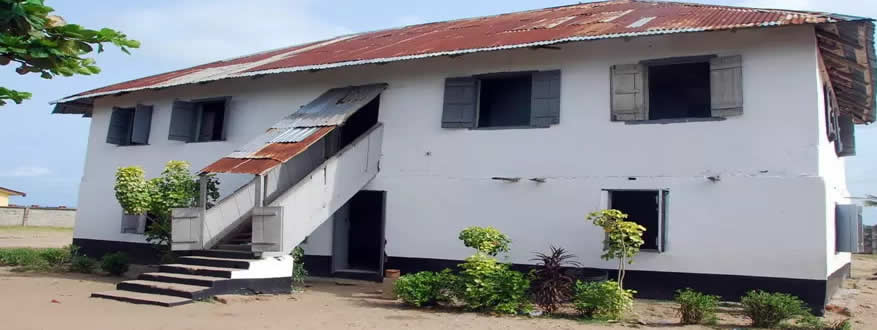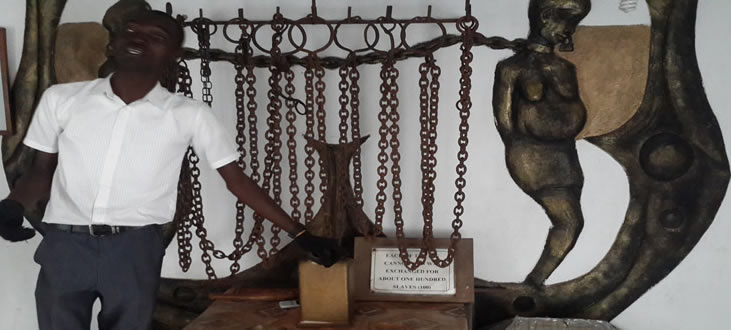
BADAGRY
Latitude: 6.4150 Lat (DMS) 6° 24' 54N
Longitude: 2.8813 Long (DMS) 2° 52' 53E
Elevation (Feet): 118
Population Est.: 31,645
Zipcode: 103101
History
The Ancient City of Badagry was founded pricesly 1425 A.D. It is the second largest commercial town in Lagos State, located an hour from Lagos and half hour from the Republic du Benin.
The name Badagry was said to have been evolved from the dual corruption of Agbedegreme (which means Agbedeh’s farm in “Ogu” language) to Agbadarigi and Agbedagari to Badagry by Yoruba settlers and European slave traders respectively. Agbedeh was the famous farmer who founded the town.
From existing perspectives, Kings from the ancient and historic city of Badagry have a fascinating history of Kingship known as (Wheno Aholuship) and its traditional chieftaincy institution.
It was founded around the Third quarter of the fifteenth century, precisely 1425, by Akran Gbafoe, the ancient city of Badagry originally known as Ogbagleme.
Badagry is a monarchy headed by the Wheno Aholuship, a kingship head by the Akran of Badagry and his seven white cap high chiefs. The white cap chiefs administer the eight quarters which Badagry is divided into. These divisions are Ahovikoh, Boekoh, Jegba, Posukoh, Awhanjigo, Asago, Whalako and Ganho. These quarters and the families that ruled them played prominent roles in the slave trade business with the Europeans and Brazilians.
In early 1500s this ancient city had become a thriving community reputed for trade in salt and saltpetre by evaporation at Gberefu ancient-beach slave port of Badagry. But this legitimate trade soon gave way to the obnoxious slave trade and for four hundred years, slave trade dominated all other interests in Badagry, VLEKETE Slave Market which was established in 1502 in Badagry Lagos, It became host to European slave traders led by George Freemingo, a Portuguese slave merchant who came to Badagry around 1660s.
By 1600’s, slaves were transported from West Africa to America through Badagry. It is reported that Badagry exported no fewer than 550,000 African slaves to America during the period of the American Independence in l787.
Reports showed that the slave market opened for business every two days with no fewer than 900 slaves sold per week. The slaves were auctioned for commodities like iron bars, mirror, cotton, dry gin, whiskey, cannons, gunpowder, gun and other assorted spirits.
In addition, slaves were transported to Europe, South America and the Caribbean. The slaves came mainly from West Africa and the neighboring countries of Benin and Togo as well as others parts of Nigeria. The slave trade became the major source of income for the Europeans in Badagry.
Apart from the ancient city of Badagry, there are over 200 rural communities adjoining the ancient city. Some of the prominent ones are Apa, Ajido, Kweme, Ibereko, Iworo, Ilogbo, Ikoga, Igborosun, Ilado, Imeke, Topo-Idale, Aradagun, Toga, Ajara, Imeke, Gbaji-Yekke, Ganyaingbo, Koga, Pota, Tohun, Erikiti, Mosafejo, Iragbo, Wesere; and many more.
|From the 1840s, following the suppression of the slave trade, Badagry declined significantly, but became a major site of Christian mission work.
In 1863, the town was annexed by the United Kingdom and incorporated into the Lagos colony. In 1901, it became a part of Nigeria. Then Mobee slave relics museum was formed.
Mobee slave relics museum, is located along Mobee street in Badagry-Lagos, Nigeria , a place where the Original slave relics were kept and preserved right from when slave trade was abolished to show all generations willing to know more facts about slave trade and to preserve the memories of the early centuries
The Museum is situated at the Mobee Family compound in Boekoh Quarters of Badagry. It consists of the relics used during the slave trade between 16th and 19th century. The relics in the museum include Neck Chains, Leg Chain, children links, Ankle clasps, Mouth clips, Wrist Clasp, water bowl etc. The Mobee Family was able to assemble all these equipment due to the acknowledged roles of their ancestors in slave trade and its abolition
The first educational system of Nigeria as a British colony started in Badagry where the first primary school was built and named "St. Thomas (ANGLICAN) Primary School in 1845. The first Secondary school in Badagry was built over one hundred years later called Badagry Grammar School in 1955 due misunderstanding between the Missionaries and the natives that made them leave the town unceremoniously. In 1863 the town was annexed by the United Kingdom and incorporated into the Lagos colony. In 1901 it became a part of Nigeria.
Badagry subsists largely on fishing and agriculture, and maintains a small museum of slavery. The town inhabits dwellers from all over the country doing different business in the town. Some trade in clothing, food items, used cars from overseas and other imported goods. The town is just few kilometers from Seme a border town to Republic of Benin and generates the highest Nigeria Customs duties income till date.
Badagry has a lot of festivals and the Badagry Festival features differing acts and performances. On our acts and performances includes:
*Liberation Day Celebration
*Football Competition (Oba Akran Cup)
*Arts & Crafts Festival,
*Nature/Water Sport Activities
*Vothun Henwhe Festival
*Zangbeto Exotheric Masquerade Festival,
*Gbenepo Royal Carnival
*International Day for the Remembrance of Slave Trade and Its Abolition
* Carnival Day etc.
Interesting things about Badagry
- Badagry has a place as one of the “firsts” in Nigeria’s colonial history.
- The first storey building in Nigeria is in Badagry it was built by Reverend Henry Townsend in 1845.
- The first primary school was built and named "St. Thomas (ANGLICAN) Primary School in 1845.
- The first Teachers Training College in Nigeria was also established on Topo Island Badagry by the Roman Catholic missionaries in 1893.
- Badagry locals, comprising of the Aworis, Egun, Yoruba and Ogu people
- Their best food is their famous snack, Ajogun, made from cassava, best enjoyed with coconut water sucked from a straw plunged deep into the
- The title of Badagry’s royal father is Oba Akran, a kingship so influential that one of longest commercial avenues in Ikeja, was named after him popular known as Oba Akran which is about (a 2.14kilometere stretch)
Banks in Lagos
Brief History of Lagos
Business and Economy
Festivals and Carnivals
General and Teaching Hospitals
Hotels and Guest Houses
Local Governments & LCDAs
Lagos State Ministries Agencies and Parastatals
Police Stations
Popular Markets
Prominent Towns
Restaurants, Bars, Night Clubs
Shopping Malls
Lagos State Executive Council
Tourist Attractions
Traditional Rulers




